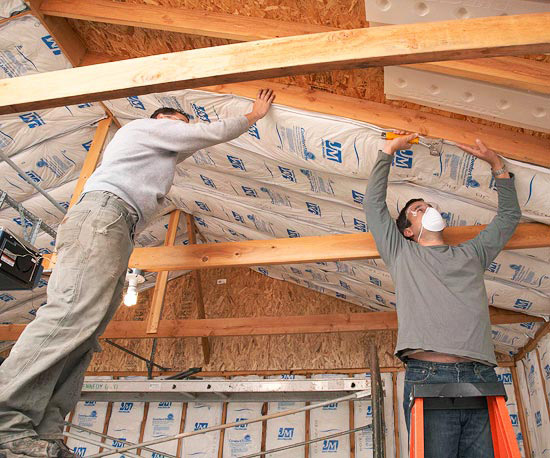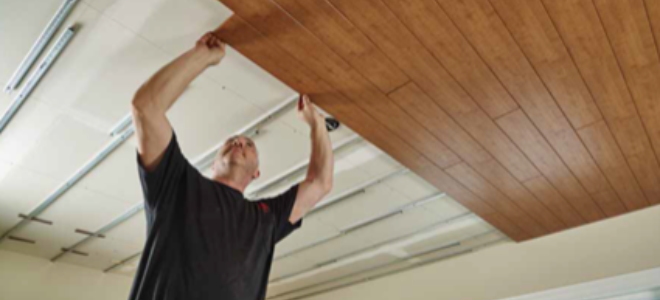Omitting a ceiling vapor barrier by arguing that you have to let the moisture escape or because the house has to breathe out the top is actually correct in a way.
Vapor barrier detached garage ceiling.
This is normally done because it s the most cost effective method to achieve the desired level of comfort and ease of installation.
I am starting the process of insulating my detached 23 x 32 garage in buffalo ny cold lots of snow winters with the secondary goal of having constant natural gas overhead heat keeping.
I live in mn and am insulating my garage ceiling in an attached garage.
Matt risinger a builder in texas on the cutting edge of building science yes that is a thing has a great video about whether or not you need a vapor barrier.
If you re using old uninsulated doors pick up a retrofit kit that add insulating panels.
It s also incorrect in a way.
Writing to ask if i should using a kraft paper barrier plastic vapor barrier or no vapor in my garage insulation project.
Yes you should because the vapor barrier should always be installed on the warm side of the wall.
I ve read the articles here and on other sites and it seems like i can t get a final decision.
Whether or not you need a vapor retarder hinges on three main factors your climate your home and the location of the wall you re insulating.
Basically you want to use unfaced insulation when you don t need a vapor barrier or have a separate one.
It also has the advantage of letting out any moisture that may get through the interior vapor barrier.
A vapor retarder is a material used to prevent water vapor from diffusing into the wall ceiling or floor during the cold winter.
To know if you need a vapor retarder ask yourself a few basic questions.
I m so confused about vapor barriers.
If you re adding new garage doors be sure to install insulated options.
Install as directed typically cutting to fit and using a staple gun to attach the vapor barrier to the studs.
Now i m a real fan ha ha of controlled mechanical ventilation to limit interior moisture levels in cold and mixed climates as well as to.
And the ceiling acts as a enough of a vapor retarder.
First of all a garage is not a signicant source of vapor as it is not occupied that much and you don t cook or bath in in it.
The science of moisture movement.
Thus installing vapor barriers on wall surfaces must.
The traditional way to insulate the walls and ceiling of a typical garage is to install fibreglass batt insulation in the walls and attic space followed by a six mil poly air vapour barrier and drywall.
Unfaced means there s no paper barrier on one side of the insulation.









